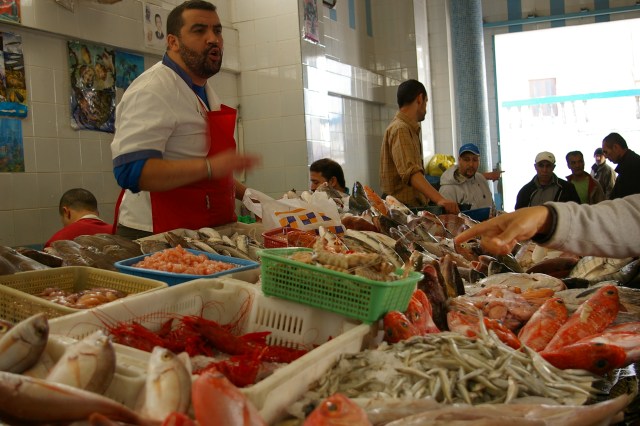One of the things that Luxor, and Egypt in general, is known for is alabaster and our guide made sure to take to one of the alabaster factories. At the factory, you can find two types of products, those that are machine-made and those that are hand-made. The differences are fairly obvious as the machine-made products are thinner, lighter, and don’t have tool markings on them while the hand-made are heavier and have distinct tool marks. Alabaster comes in three colors, dark green, tannish-yellow, and white. One of the reasons that alabaster is prized is due to its translucence and the effect of the light passing through the soft stone.


Before going into the store with all of the various products made out of alabaster, we were treated to a demonstration of how the artisans made vases from the stones. It is a three or four step process depending on the product being created. In the first step, the stone is chiseled into the basic shape of the design of the object being created. Next, if it is to be a vase or candle holder, a kind of drill is used to hollow out the stone. Afterwards, the outside of the stone is filed and sanded to make it completely smooth to the touch. Finally, if the artisan desires, images are carved into the surface such as hieroglyphs, scarabs, or an ankh.

Once the workers demonstrated the tools to us, it was our turn to take a turn chiseling and drilling into the alabaster. Although not complicated, it was actually tiring work, so one could only imagine spending a full day of shaping the alabaster. After spending time learning about the process, we went into the store to decide if we wanted to purchase any of the alabaster products. Having seen the process, we focused on those that were hand-made and eventually chose a couple of alabaster vases that we now put on display, lighting candles inside of them to show off their color and semi-transparency.

Going to an alabaster factory while in Egypt is definitely worthwhile and certainly a must if you are in Luxor. There is certainly nothing wrong with getting a machine-made alabaster product as they are uniformly shaped, extremely smooth, and sometimes allow more light to pass through. Every time we see our hand-made alabaster vases, we are reminded of our day in Luxor.































